We were very kindly invited to the autopsy of the female orca who was found dead on the nearby island of Linga.
🐋 🐋 🐋 🐋 🐋 🐋 🐋 🐋 🐋 🐋 🐋 🐋 🐋 🐋 🐋 🐋 🐋 🐋
Disclaimer: GORY PHOTOS FOLLOWING – IF YOU ARE OF A NERVOUS DISPOSITION, YOU HAVE BEEN WARNED!
These are my photos. I have copyrighted them. They go with this blog post and are not for using (stealing) to promote the cruelty of man, whale deaths, whale killings, whale hunting or any other such wrong doing.
If I find them on the internet unattached to this blog, I will hunt you down with a large invoice that will make your eyes water.
🐋 🐋 🐋 🐋 🐋 🐋 🐋 🐋 🐋 🐋 🐋 🐋 🐋 🐋 🐋 🐋 🐋 🐋
When we arrived, the team from The Scottish Marine Animal Stranding Scheme had already started. They came up by ferry from Inverness.
By the time we showed up, the orca had been thoroughly opened up.
The digestive organs – stomach on the left with intestines
The stomachs sac – it was empty.
The kidneys – composed of many small relatively independent kidneys (renicules) containing considerable interrenicular tissue.
Blubber – between 4 – 9 cm thick in places.
Cutting the mesentary to lay the intestines flat so they can be subsequently examined.
The first part of the digestive tract had no food in it but contents were found later along and included traces of fur and digested food.
The orca had a total of 13 ribs.
Three had to be removed to gain access to the thoracic cavity.
The lungs showed that the orca had laid on her left side for a while out of the water – there was pooling of the blood (darker lung on the left)
This side showed less congestion.
The heart was removed.
It was a good size and healthy and fun fact – It actually looks like a heart. Heart shaped, heart colour and beautiful.
A nice large healthy liver – very similar to human liver with all the same functions. We are both mammals, after all.
The “Monkey Lips” or Phonic Lips – this structure projects into the nasal passage and is used for making sound necessary for communication, navigation and finding food.
The blowhole
The melon – a mass of adipose tissue located in the brain that has two layers of tissue. It focuses and modulates the animal’s vocalizations and acts as a sound lens.
The brain, sadly, was gloup. As the orca had been in the water for over a week, it had decomposed to a slushy mess.
Autopsy Conclusion:
From the Scottish Marine Animal Stranding Scheme report:
“This was an adult female, 5.20m in length, found stranded on the island of Linga last Thursday.”
She was in a good body condition, hadn’t recently eaten but had traces of hair, likely seal fur in the intestines. Unfortunately the carcase wasn’t the freshest, and she’d probably been dead a few days before discovery. She had a generalised infection in her abdomen, affecting the stomach, kidney, liver and intestines. Given her otherwise good body condition, we think this was a relatively acute event and, from patterns in the lung and bruising, we are fairly confident she live stranded. She had also recently been pregnant, but was found with a prolapsed uterus and probably have lost her calf prior to stranding. There was no indication of any human-induced trauma or entanglement.”
Pus from the infection found in her abdomen.
There was no evidence of man’s involvement in her death. The reason why she had to be quickly removed from the sea, was because leaving her there would pollute the voe which is used for fish and mussel farms.
Also, they needed to find out why she died to see if there was anything unnatural about her death. Nothing specific was found or indicated.
A huge thank you to the Scottish Marine Animal Stranding Scheme for showing us the inside of a killer whale. It was fascinating and a huge education. I learned so much.
Here are some extra photos.
Hungry work but difficult if you can’t change your gloves very easily!
Pooling whale oil.
Everyone – caterers, photographers, and general onlookers.
The team from Scottish Marine Animal Stranding Scheme.
My Conclusion:
Whales smell and it takes about an hour before you stop noticing because seeing what goes on in the inside is absolutely fascinating. I will never forget.






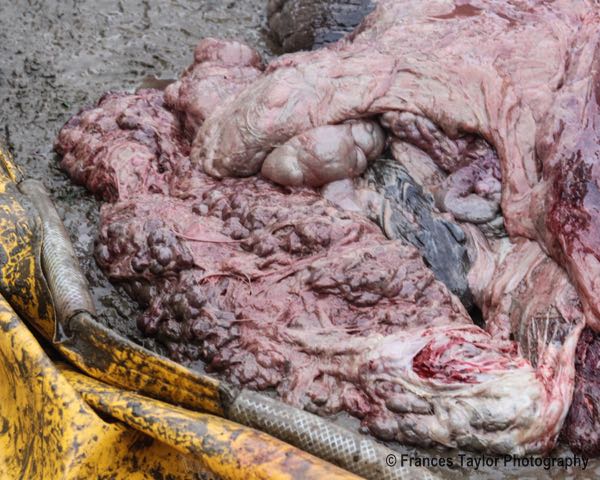
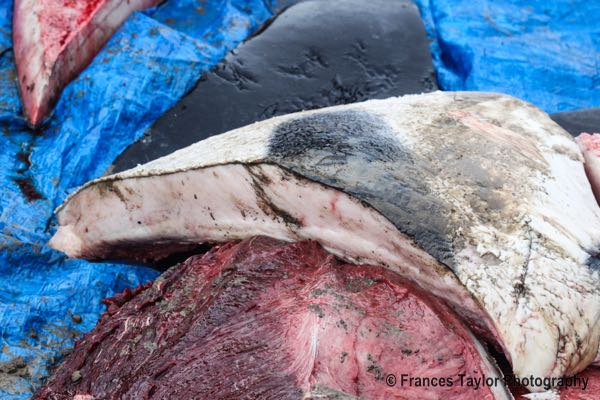



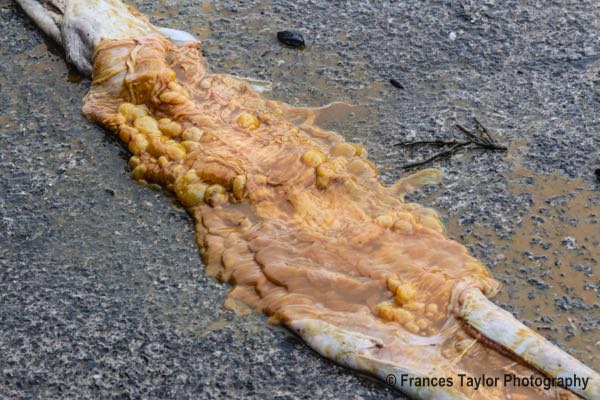

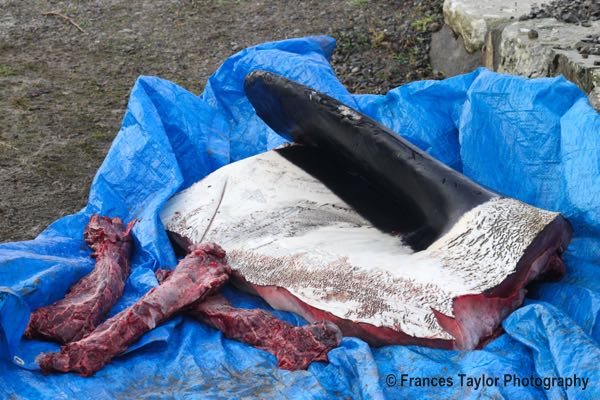

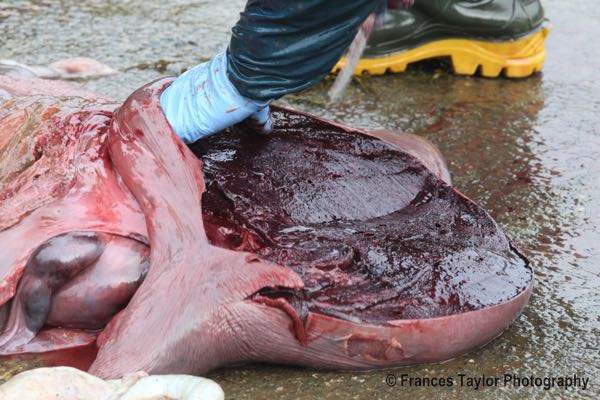
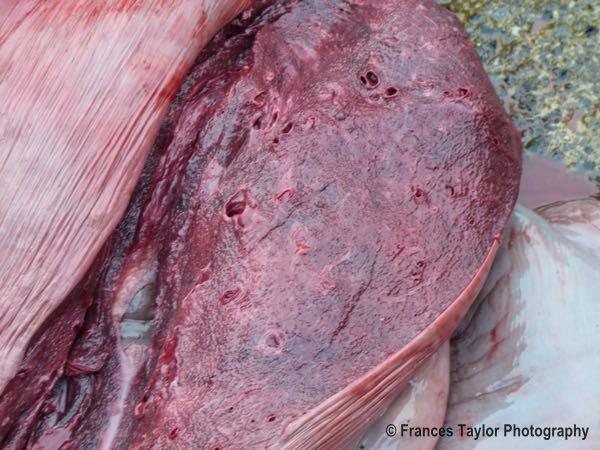





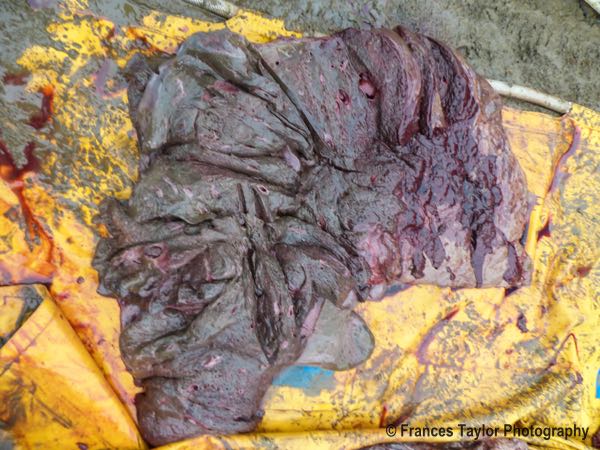

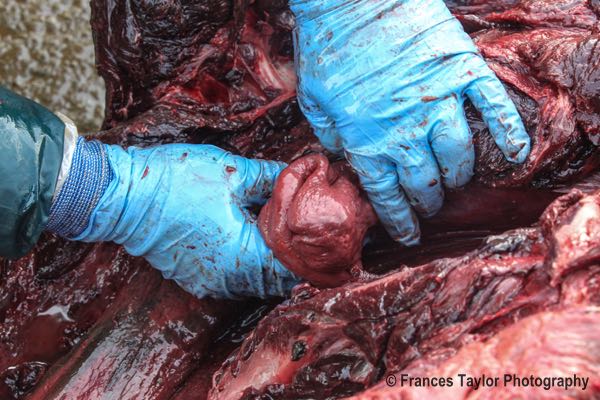




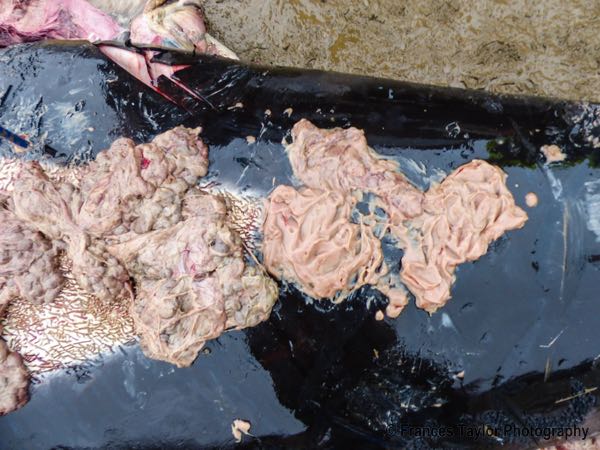


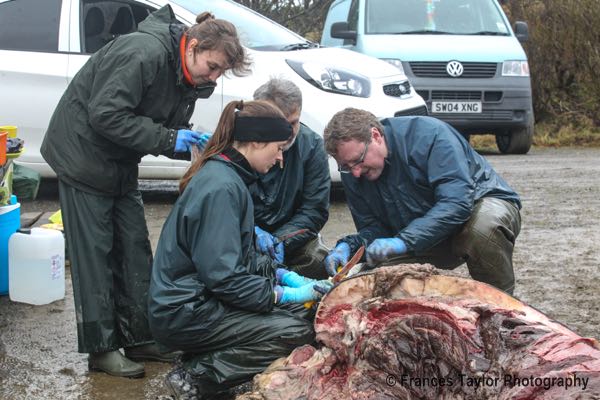
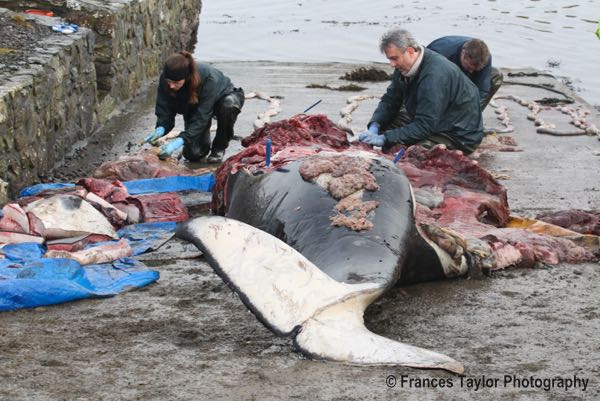





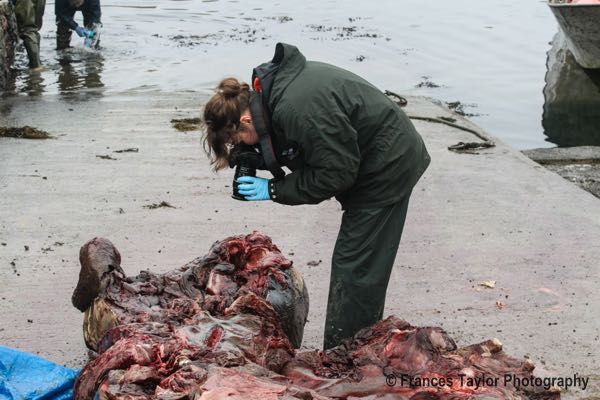

Wow! Thank you for documenting this and sharing it with us. Very few of us will ever get to see a cetacean taken apart in front of them, so it was fascinating to see it so clearly shown.
Great!! Absolutely great!!
Thank you, very educational. I wondered if she had died giving birth, since her uterus was prolapsed, etc. Guess that was unrelated to the actual cause of death. Poor creature. I love whales, they’re so elegant.
Wow! Thank you for sharing…so informative!
I’m glad to hear that they didn’t find anything human related about her death…whew!
I wonder if she was sad/depressed from losing her calf? Poor thing. I hope she didn’t suffer long.
Rest in Peace.
Excellent photo’s. It is such a tragedy that magnificent creature died. I’m glad that her death was not the result of anything to do with mankind. Poor creature.
Absolutely fascinating! I didn’t know that about the kidneys. And the heart structure and valves are amazing. Thank you so much for taking the time. 🙂
What did they do with the remains after the autopsy?
The bones went to a seal and otter sanctuary on Shetland fOr reconstruction.